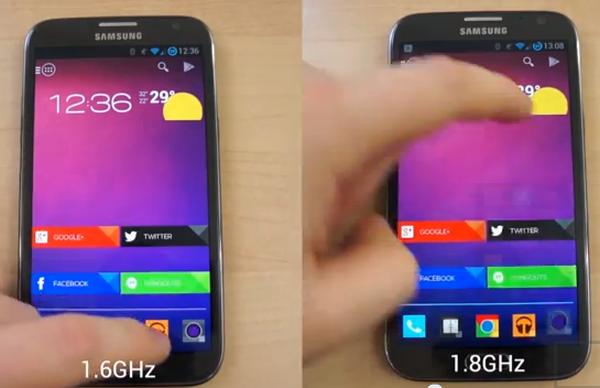Samsung Galaxy Note 2 overclocked, before and after

Over the last couple of years we have seen the smartphones that we use becoming more powerful and much quicker in use, which is partly down to the more RAM inside them along with the improvement in the actual processors, and today we have a video for you that shows the Samsung Galaxy Note 2 overclocked before and after.
The added bloatware that smartphone manufacturers load onto smartphones can make them start to lag a little bit, and that is one criticism that some people level at Samsung phones with the TouchWiz Android overlay.
This gets worse as you fill the available storage and is an issue that has also been affecting some Nexus 7 owners. When Samsung first released the Galaxy Note 2 it was one of the most powerful smartphones available to consumers, and the video below shows the results of overclocking the handset.
The kernel used for the Galaxy Note 2 in the video is called Note2Core that comes with three versions ranging from standard through to extreme, and for the video the user installed the extreme version.
It then goes on to show you how to install the software and you are advised that you must use a TouchWiz based ROM to avoid the handset going into a continuous boot loop or worse. Once booted up the device was set to 1.8GHz but once overclocked the Note 2 performance was markedly worse in benchmark tests.
While running the stock kernel the Galaxy Note 2 scored just over 17,000 but when overclocked returned less than 13,000, and this was found in a number of benchmark tests. But in real world tests the results were different with a slight improvement in the response time of the handset. Watch the full video and tell us what you think of the outcome.

Comments
One thought on “Samsung Galaxy Note 2 overclocked, before and after”
This is bizarre. All benchmarks say the overclocked phone performs worse than stock and yet the user experience test (i.e. responsiveness) shows it performs better.
Anyone have an idea what the benchmarks are testing that differs from real world? Has anyone looked at specific metrics from the benchmarks to see which ones changed the most. I wonder if this is like the silly windows experience test its’ result is based on slowest item in list of tested components and a poster on youtube suggested overclocking the video (gpu) subsystem of the phone. Maybe the cpu overclock is increasing rendering errors because the gpu is out of sync? Again someone look at the metrics from the benchmarks before and after and post them so we can see what’s going on.
thanks